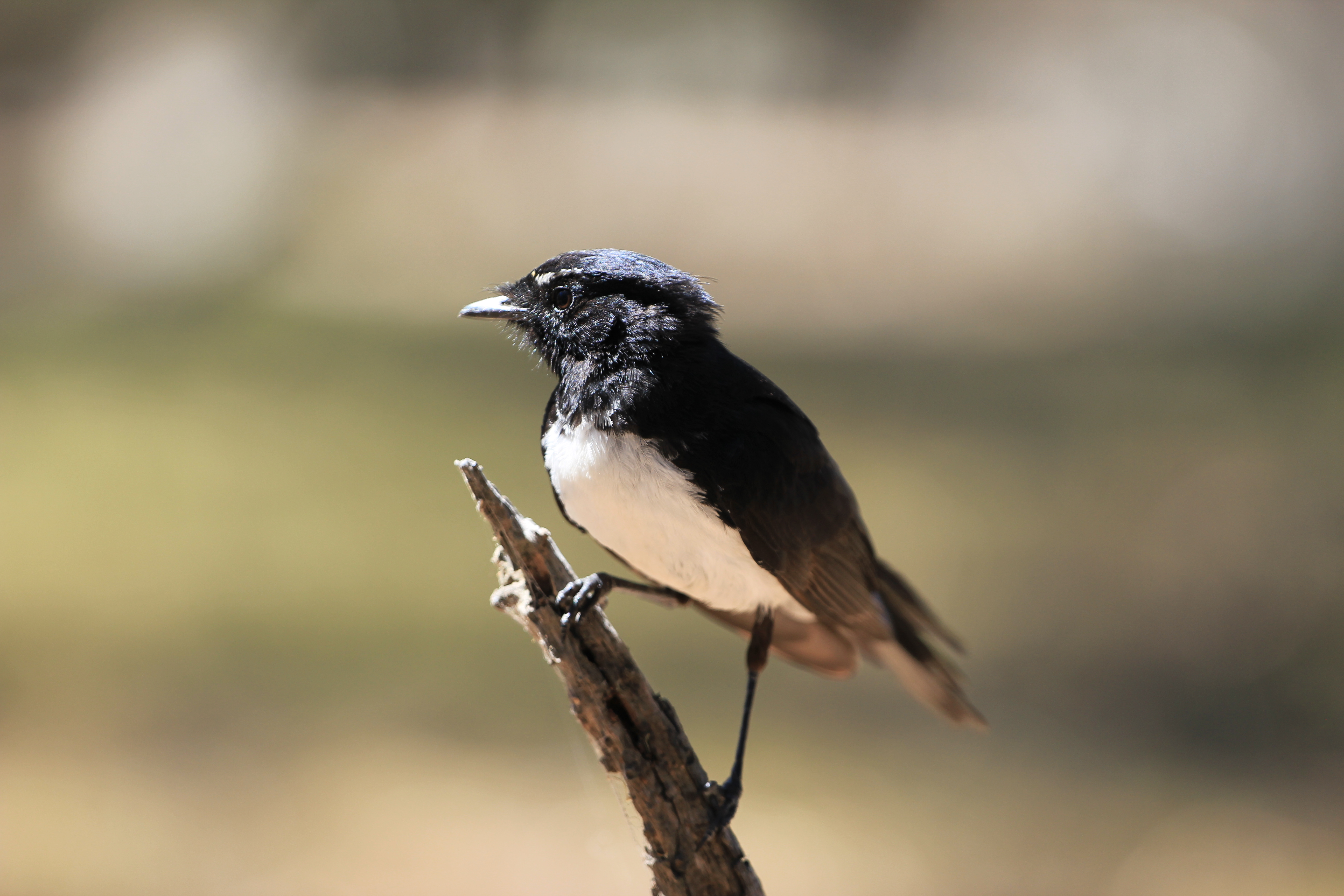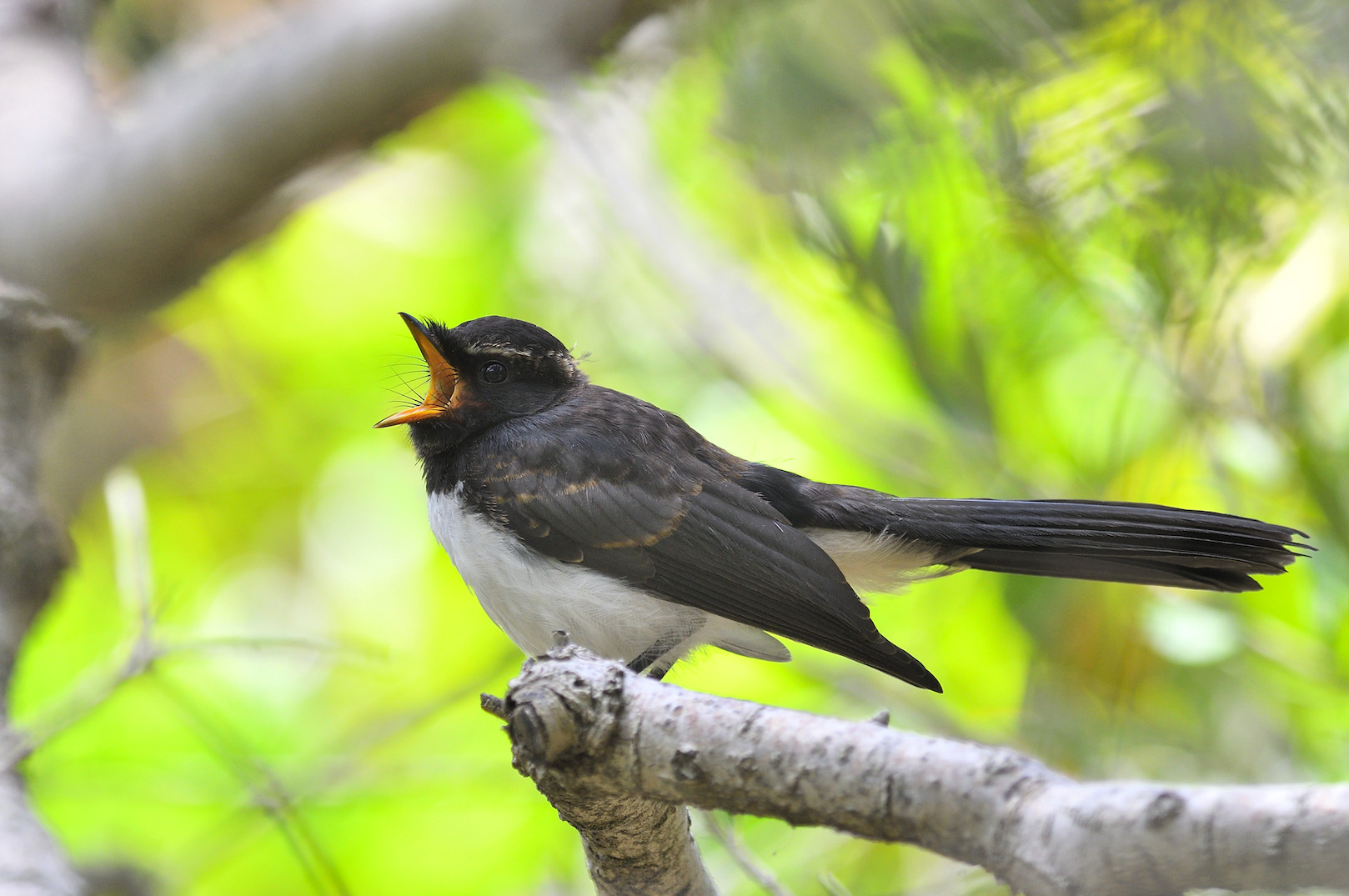
Willie wagtails: The werewolves of the bird world

The willie wagtail, an iconic Australian bird, is known for its fan tail and twinkling song. By recording birds across Victoria, a new study shows that willie wagtails also sing to the moon
Published 26 August 2020
“A poet is a nightingale who sits in darkness and sings to cheer its own solitude with sweet sounds; his auditors are as men entranced by the melody of an unseen musician, who feel that they are moved and softened, yet know not whence or why.” – Percy Bysshe Shelley, 1903.
The nightingale is, as its name suggests, an infamous nocturnal singer known throughout Europe, Asia and North Africa. Its song signals the onset of springtime and, perhaps more importantly for the nightingale, the commencement of the mating season.

Here in Australia, we have our own nightingales: the Australian magpie whose iconic warbling is recognised throughout the cities and bush; and the lesser known, but even more prolific nocturnal crooner, the willie wagtail.

And we’ve discovered that the willie wagtail doesn’t just sit in darkness and sing to cheer its own solitude – it howls by the light of the moon.
You are sure to have seen these birds during the day and maybe you have been lucky enough to have heard them singing at night. But have you ever wondered what it is that makes a diurnal bird, that is one who is normally only active during the day, stay up beyond its bedtime to sing at night?
Our research into the willie wagtail provides some answers to this question and sheds light (moonlight to be precise) on the nocturnal conditions they prefer most.
Bird song is largely thought of as a daytime behaviour, however, at least 30 per cent of birds also call at night and, perhaps surprisingly, the majority of these birds are, like the willie wagtail, usually active during the day.

They have a twinkling song, often described as sounding like they are saying “sweet pretty creature”. They are known as the ‘shepherd’s companion’ as they are commonly seen around livestock, feeding on the insects attracted to the herds.
People will tell you willie wagtails sing most during full moon nights, but until now this was anecdotal storytelling rather than science. Many other ‘myths’ about full moons have turned out not to be true, for example that crime increases during a full moon, so we set out to test this ‘story’.

Environment
The threatened species in our urban jungle
Over the past three years we have been recording the songs of willie wagtails across the state of Victoria. Our recent study published in the journal Behavioural Ecology and Sociobiology confirms that willie wagtails do sing most during full moon nights.
In this study, we recorded the nocturnal singing of willie wagtails over eight complete lunar cycles, in four rural locations across Victoria. We found that willie wagtails increased the amount of time they sang in line with the brightness of the moon – essentially making sure they are both seen and heard.
In addition, just like the nightingale, we found that it is males (not females) that are investing in singing and they start this performance in late winter or early spring.
Our findings suggest that male willie wagtails sing at night to increase their chance of producing offspring during spring. We are not yet able to prove this, but our understanding of the function of daytime song in birds provides us with some clues.

Sciences & Technology
Where have all the stars gone?
Daytime song acts as a signal to attract mates and helps to defend their territories from intruders. We think it is likely that nighttime singing also helps to attract mates. Why they need to do this at night is unclear but perhaps time is limited during the mating season and so they use all available hours to increase their chance of success.
Or maybe they just lose control when the moon rises. Probably not, but we’re keeping an open mind as research continues.
Male willie wagtails sing at night whether they are alone or they have a partner, and this suggests they may be doing so to protect their territories.
Anyone who is familiar with the willie wagtail will know they are fierce defenders of their territory and will produce a rattle-like scold as a warning if you get too close to their nest. Extending this territory defence into the nighttime hours does not seem like a stretch of the imagination.

So, the stories were true - the willie wagtail does serenade by the light of the moon and it has likely done this for hundreds of generations.
This then raises interesting questions about whether this behaviour changes when willie wagtails inhabit our cities, where artificial lighting is always brighter than the light of the full moon.
Could streetlights affect the nighttime singing of willie wagtails? People have started suggesting that the presence of streetlights is causing them to sing more.
Once again this is pure anecdote, so we are investigating whether this is true. Preliminary studies suggests that artificial light at night disrupts their singing behaviour, but the extent to which this affects their mating success remains a mystery for now.
Banner: Ryan Potter


